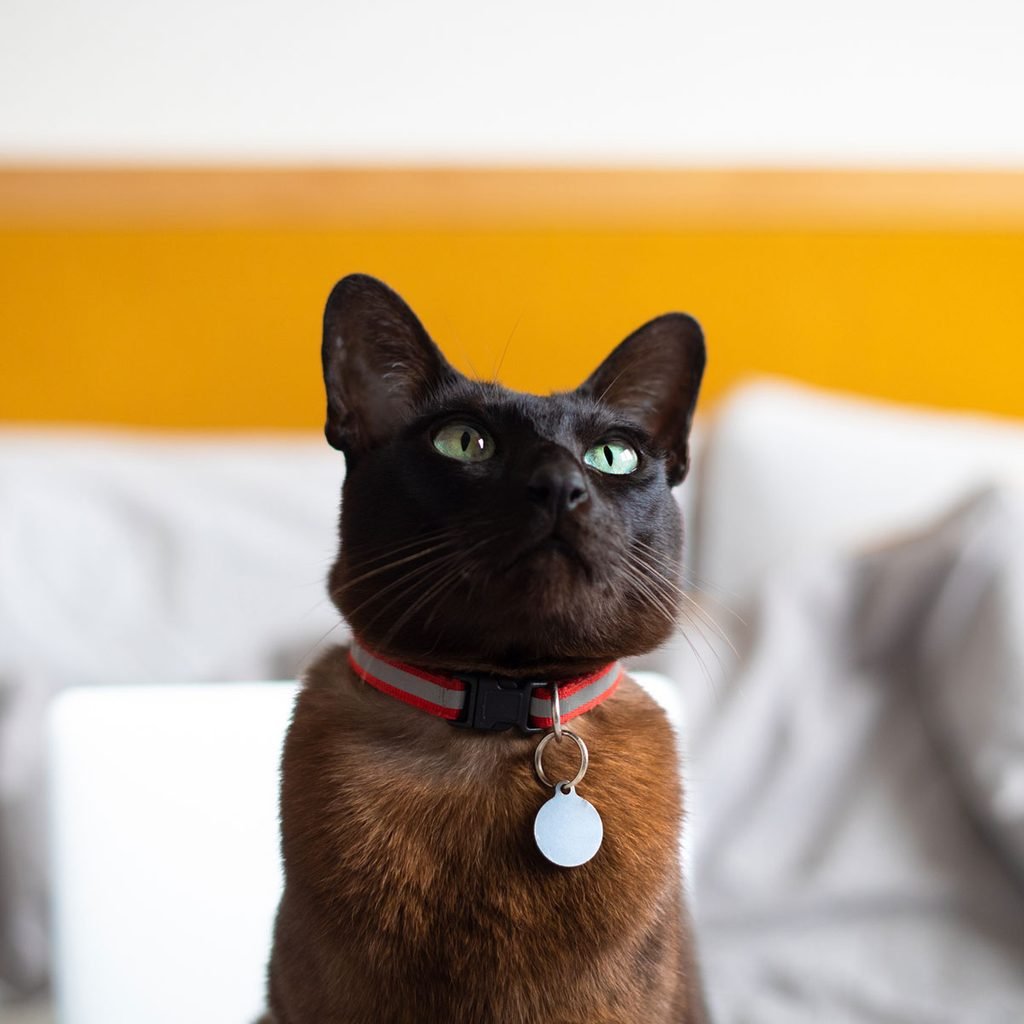Should You Get a Collar for Your Cat?
Updated: Nov. 17, 2023

A collar is more than just a cute accessory for your cat. It's a tool that provides safety and security for them and peace of mind for you.
Your new cat’s new digs are all set up with a litter box, food and water bowls, a few DIY cat toys and a cozy place to nap. What’s missing? A collar!
Technically, cat collars are optional. However, experts highly recommend them because, well, you never know when that sneaky little feline will slip out the back door and get lost. Without one, you won’t have a reliable way to outfit them with an identification tag (something that is also highly recommended), says Marci Koski, Ph.D., a certified feline behavior and training consultant in Vancouver, Wa. So, yes, you should get your cat a collar.
“The main purpose is to provide ID for a cat,” Koski says. A collar with an ID tag is extremely useful if a cat becomes injured because the owner’s contact information is readily available. Ideally, tags should include the cat’s name and current contact information for the owner. If you want to skip the tag, a laser-engraved collar will do the trick as well. P.S. If your cat sheds a lot of hair, the Hertzko Slicker Brush will be a game-changer.
On This Page
How to Choose the Best Cat Collar
With about a billion choices, how do you go about selecting the best cat harness or collar for your cat?
First of all, choose a collar that fits properly. “My rule of thumb is you should be able to put two fingers under the collar,” Koski says. “It should be snug, not lose.”
Typical materials run from leather to nylon to neoprene. All are fine, but Koski says cats will have their preferences. (Of course they will!)
Some cats prefer neoprene collars like Beastie Bands, perhaps because they are more pliable. Rough-and-tumble cats need a more durable collar. In that case, go for leather. And you may have a cat that’s not finicky at all. Expect to try out a few before you find the right fit, Koski says.
If you think your cat could be a nighttime flight risk, or it’s an outdoor cat, consider a reflective nylon collar. This will ensure their visible in the dark, reducing the chance of being hit by a car. Keep in mind the Humane Society recommends keeping cats indoors, except when supervised and on a harness.
Is It Safe for Cats to Wear Dog Collars?
While it might seem like a cat could wear a collar designed for a small dog (like a pug or a chihuahua), cats should only wear collars designed specifically for cats, says Koski. That’s because most cat collars are breakaway collars, allowing the cat to easily get out and avoid choking if the collar catches on a tree branch or something that won’t give. Dog collars don’t have this feature.
The downside to this? “Breaking away” from the collar also means breaking away from the ID tag that is attached to the collar. So be sure your cat is microchipped, giving you a backup means of protection and identification.
When to Use a Cat Collar
Unlike a cat harness, a collar is something most cats should wear around the clock, according to Koski. However, if your cat’s collar has a bell that keeps you up at night, remove it at bedtime (for your own sanity!) and don’t forget to put it back on in the morning. Don’t use a collar with a cat leash; a leash should be paired with a sturdy cat harness.
“If it is unlikely that your cat will get out at night, it is OK to take it off at night,” Koski says. (Of course, you could always just get a collar without a bell — problem solved.)
How to Get a Cat to Wear a Collar
Finally, don’t assume your cat will love the collar right away. Cats tend to take their time accepting new things, so Koski suggests easing your cat in slowly so they get used to the idea of wearing one. Allow them to sniff and inspect the collar, offering rewards and praise along the way until they “agree” to put it on.
